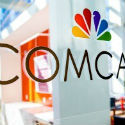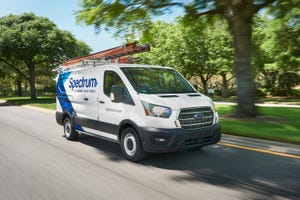Comcast downstream upgrade shifts 1-Gig to 1.2 Gbit/s
Speed boosts for select tiers were activated March 9 in MSO's Central Division, with East and West on deck. Comcast has also goosed the downstream speeds of its Prepaid Internet and Internet Essentials products nationwide.

Comcast confirmed that it activated speed upgrades for select tiers in its Central Division on March 9, including a boost that raises the maximum downstream of its 1-Gig service to 1.2 Gbit/s.
The max downstream speeds for Comcast's Extreme Pro tier, meanwhile, are rising from 600 Mbit/s to 800 Mbit/s.
However, the upstream maximums for those tiers will stay the same – the new 1.2-Gig tier will continue to be paired with an upstream rate of up to 35 Mbit/s, and Extreme Pro's max upstream speed will stay at 20 Mbit/s.
Comcast said it expects to deploy similar upgrades in its West and Northeast divisions, but didn't announce timing. The operator's Central Division includes cable operations in states such as Illinois, Indiana, Michigan, Arkansas, Georgia, Tennessee and Florida, among others.
Comcast's Extreme Pro and Gig-level services run on Comcast's DOCSIS 3.1 network. Comcast also offers a more targeted (and pricey) fiber-to-the-premises (FTTP)-based product that delivers symmetrical speeds of 2 Gbit/s.
Comcast confirmed it has also introduced speed increases on a national basis for its Prepaid Internet product and for Internet Essentials, a program for low-income households.
Comcast's Prepaid Internet and Internet Essentials services now deliver up to 50 Mbit/s down and 5 Mbit/s upstream, an increase from 25 Mbit/s down and 3 Mbit/s up before. Comcast introduced its Prepaid Internet product in 2013, starting off with speeds of just 3 Mbit/s down and 768 kbit/s upstream.
Reports on the speed upgrades in the Central Division have been circulating on DSL Reports and posted by CableTV.com.
Speaking last week at the Morgan Stanley Technology, Media & Telecom Conference, Comcast chairman and CEO Brian Roberts noted that the company has now increased data speeds 20 years in a row.
The bulk of those speed increases have occurred in the downstream. Comcast and other cable operators are looking to goose upstream capacity using mid-split or high-split upgrades that expand the amount of spectrum dedicated to the upstream. Comcast is also pursuing Full Duplex DOCSIS, an approach that will allow both upstream and downstream traffic to reside in the same block of spectrum. Comcast used a high-split (an expansion of the upstream to 204MHz) for a test in Jacksonville, Florida, that is generating symmetrical speeds of 1.25 Gbit/s.
Comcast has been taking some heat for not being more upfront about the way it markets upstream speeds, with Ars Technica noting that those details typically are not shared until after services are ordered.
Comcast and other ISPs have seen both upstream and downstream demand rise during the pandemic. In a report issued last week , Comcast found that 2020 peak Internet traffic on its network climbed 32% over pre-pandemic levels, and by more than 50% in some markets in 2020.
However, Comcast's network usage remained highly asymmetrical during this period, with downstream traffic volumes still 14times that of upstream traffic in 2020. Video streaming accounted for about 71% of all downstream traffic in 2020, Comcast said.
Speaking Wednesday at the Deutsche Bank Media, Internet & Telecom Conference, Comcast CFO Mike Cavanagh said the cable operator is "dialed in" to again add at least 1 million broadband subs in 2021, repeating a feat that Comcast has achieved for the past 15 years.
Speeds, at least in the downstream, are not the only selling point Comcast has been using for residential broadband. While Comcast's "xFi" system lets customers manage their home Wi-Fi networks and hit dead spots with extenders, Cavanagh said the use of Flex, a streaming product for broadband-only subs, has led to churn reductions in the range of 15% to 20% for the broadband-only group.
Related posts:
— Jeff Baumgartner, Senior Editor, Light Reading
About the Author(s)
You May Also Like




_International_Software_Products.jpeg?width=300&auto=webp&quality=80&disable=upscale)







